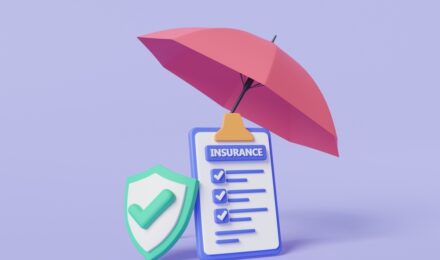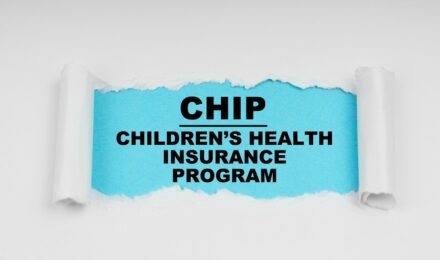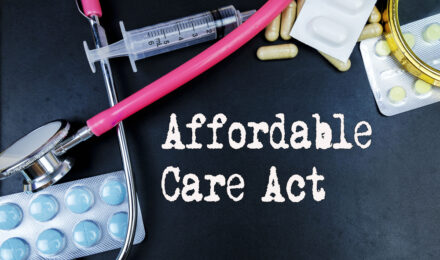Contents
Government stimulus programs, such as the Recovery Rebate Credit, play a pivotal role in economic recovery during crises. By injecting funds directly into the hands of individuals and businesses, these initiatives ignite a cascade of economic activity that sustains communities and preserves livelihoods. Furthermore, they act as stabilizers that help mitigate the long-term impacts of economic downturns. This document delves into the nuanced impacts of such programs, showcasing their profound ripple effects on the broader economy.
Targeted Relief Through Income-Based Policies
The Recovery Rebate Credit is a model of targeted financial intervention. Specifically, it was designed to prioritize lower-income households, ensuring funds reached those grappling most acutely with economic hardship. Moreover, this strategy didn’t just alleviate immediate financial woes; it recalibrated tax burdens for higher earners, creating a more equitable distribution of relief.
Small business owners and unemployed individuals reaped critical benefits, gaining access to funds for essential expenses. Consequently, they weathered the storm, not with ease but with a fighting chance. Such a nuanced approach underscores the value of tailoring aid to diverse economic realities and needs.
Alleviating Unemployment Challenges
The pandemic upended millions of lives overnight. For those living paycheck to paycheck, the impact was catastrophic. However, stimulus programs acted as lifelines, providing vital financial support to those suddenly thrust into precarious circumstances.
This assistance didn’t merely keep households afloat—it kept businesses alive too. Consequently, consumer spending surged in specific sectors, enabling employers to maintain staff or even rehire laid-off workers. Ultimately, this cycle of support illuminates the interdependence of consumers and businesses in recovery efforts.
Psychological and Social Benefits
The emotional toll of financial instability is profound. Stimulus payments didn’t just address bank balances; they offered peace of mind. As a result, knowing that basic needs could be met brought relief to countless families.
Mental health benefits often fly under the radar, but they’re crucial. Specifically, reduced stress meant fewer conflicts, better decision-making, and a greater ability to plan for the future. It’s remarkable how much stability a small injection of cash can inspire in uncertain times.
Supporting Small Businesses and Local Economies
Small businesses bore the brunt of pandemic shutdowns. These community anchors faced mounting debts, stagnant sales, and an uncertain future. Therefore, stimulus funds provided a lifeline—payrolls were met, rents were covered, and taxes paid. Some businesses, against the odds, found ways to adapt and survive.
At the local level, consumer spending surged, creating a ripple effect. Consequently, every dollar spent bolstered not just businesses but also employees and the wider community. Clearly, the interconnected nature of local economies is undeniable, and these programs proved their worth in sustaining them.
Strengthening Government Planning and Resilience
Stability is a gift—one that stimulus programs delivered to governments, enabling more precise planning for post-crisis recovery. For example, reduced tax burdens for middle- and upper-income earners encouraged discretionary spending, supporting industries reliant on luxury goods and services.
Governments also gleaned critical insights into the structural weaknesses exposed by the pandemic. For instance, from shifting consumer behaviors to the vulnerabilities of specific sectors, this data will shape more resilient economic strategies moving forward.
Encouraging Skill Development and Economic Mobility
Amid the chaos, some saw opportunity. Specifically, stimulus payments empowered individuals to pursue new skills or certifications, often through free or low-cost online programs. This pursuit of growth wasn’t just a silver lining—it was a bridge to better futures.
For those who seized it, the chance to realign career trajectories brought hope and stability. As a result, more secure jobs, higher wages, and a sense of purpose transformed lives, proving that financial support can catalyze more than survival—it can drive personal advancement.
Conclusion
Government stimulus programs, exemplified by the Recovery Rebate Credit, are more than economic tools. They are lifelines, catalysts, and stabilizers that touch every facet of society. Furthermore, by addressing disparities, supporting small businesses, and fostering individual resilience, these programs underscore the interconnectedness of people and economies. Yet, their limitations provide a roadmap for future improvements, ensuring lessons learned shape the policies of tomorrow.
Resources
- U.S. Department of the Treasury. “Recovery Rebate Credit: An Overview.” Available at: https://home.treasury.gov/
- Congressional Research Service. “Economic Effects of Fiscal Stimulus.” Available at: https://crsreports.congress.gov/
- National Bureau of Economic Research. “Stimulus Payments and Consumer Spending During the Pandemic.” Available at: https://www.nber.org/
Contents
Government stimulus programs, such as the Recovery Rebate Credit, play a pivotal role in economic recovery during crises. By injecting funds directly into the hands of individuals and businesses, these initiatives ignite a cascade of economic activity that sustains communities and preserves livelihoods. Furthermore, they act as stabilizers that help mitigate the long-term impacts of economic downturns. This document delves into the nuanced impacts of such programs, showcasing their profound ripple effects on the broader economy.
Targeted Relief Through Income-Based Policies
The Recovery Rebate Credit is a model of targeted financial intervention. Specifically, it was designed to prioritize lower-income households, ensuring funds reached those grappling most acutely with economic hardship. Moreover, this strategy didn’t just alleviate immediate financial woes; it recalibrated tax burdens for higher earners, creating a more equitable distribution of relief.
Small business owners and unemployed individuals reaped critical benefits, gaining access to funds for essential expenses. Consequently, they weathered the storm, not with ease but with a fighting chance. Such a nuanced approach underscores the value of tailoring aid to diverse economic realities and needs.
Alleviating Unemployment Challenges
The pandemic upended millions of lives overnight. For those living paycheck to paycheck, the impact was catastrophic. However, stimulus programs acted as lifelines, providing vital financial support to those suddenly thrust into precarious circumstances.
This assistance didn’t merely keep households afloat—it kept businesses alive too. Consequently, consumer spending surged in specific sectors, enabling employers to maintain staff or even rehire laid-off workers. Ultimately, this cycle of support illuminates the interdependence of consumers and businesses in recovery efforts.
Psychological and Social Benefits
The emotional toll of financial instability is profound. Stimulus payments didn’t just address bank balances; they offered peace of mind. As a result, knowing that basic needs could be met brought relief to countless families.
Mental health benefits often fly under the radar, but they’re crucial. Specifically, reduced stress meant fewer conflicts, better decision-making, and a greater ability to plan for the future. It’s remarkable how much stability a small injection of cash can inspire in uncertain times.
Supporting Small Businesses and Local Economies
Small businesses bore the brunt of pandemic shutdowns. These community anchors faced mounting debts, stagnant sales, and an uncertain future. Therefore, stimulus funds provided a lifeline—payrolls were met, rents were covered, and taxes paid. Some businesses, against the odds, found ways to adapt and survive.
At the local level, consumer spending surged, creating a ripple effect. Consequently, every dollar spent bolstered not just businesses but also employees and the wider community. Clearly, the interconnected nature of local economies is undeniable, and these programs proved their worth in sustaining them.
Strengthening Government Planning and Resilience
Stability is a gift—one that stimulus programs delivered to governments, enabling more precise planning for post-crisis recovery. For example, reduced tax burdens for middle- and upper-income earners encouraged discretionary spending, supporting industries reliant on luxury goods and services.
Governments also gleaned critical insights into the structural weaknesses exposed by the pandemic. For instance, from shifting consumer behaviors to the vulnerabilities of specific sectors, this data will shape more resilient economic strategies moving forward.
Encouraging Skill Development and Economic Mobility
Amid the chaos, some saw opportunity. Specifically, stimulus payments empowered individuals to pursue new skills or certifications, often through free or low-cost online programs. This pursuit of growth wasn’t just a silver lining—it was a bridge to better futures.
For those who seized it, the chance to realign career trajectories brought hope and stability. As a result, more secure jobs, higher wages, and a sense of purpose transformed lives, proving that financial support can catalyze more than survival—it can drive personal advancement.
Conclusion
Government stimulus programs, exemplified by the Recovery Rebate Credit, are more than economic tools. They are lifelines, catalysts, and stabilizers that touch every facet of society. Furthermore, by addressing disparities, supporting small businesses, and fostering individual resilience, these programs underscore the interconnectedness of people and economies. Yet, their limitations provide a roadmap for future improvements, ensuring lessons learned shape the policies of tomorrow.
Resources
- U.S. Department of the Treasury. “Recovery Rebate Credit: An Overview.” Available at: https://home.treasury.gov/
- Congressional Research Service. “Economic Effects of Fiscal Stimulus.” Available at: https://crsreports.congress.gov/
- National Bureau of Economic Research. “Stimulus Payments and Consumer Spending During the Pandemic.” Available at: https://www.nber.org/






